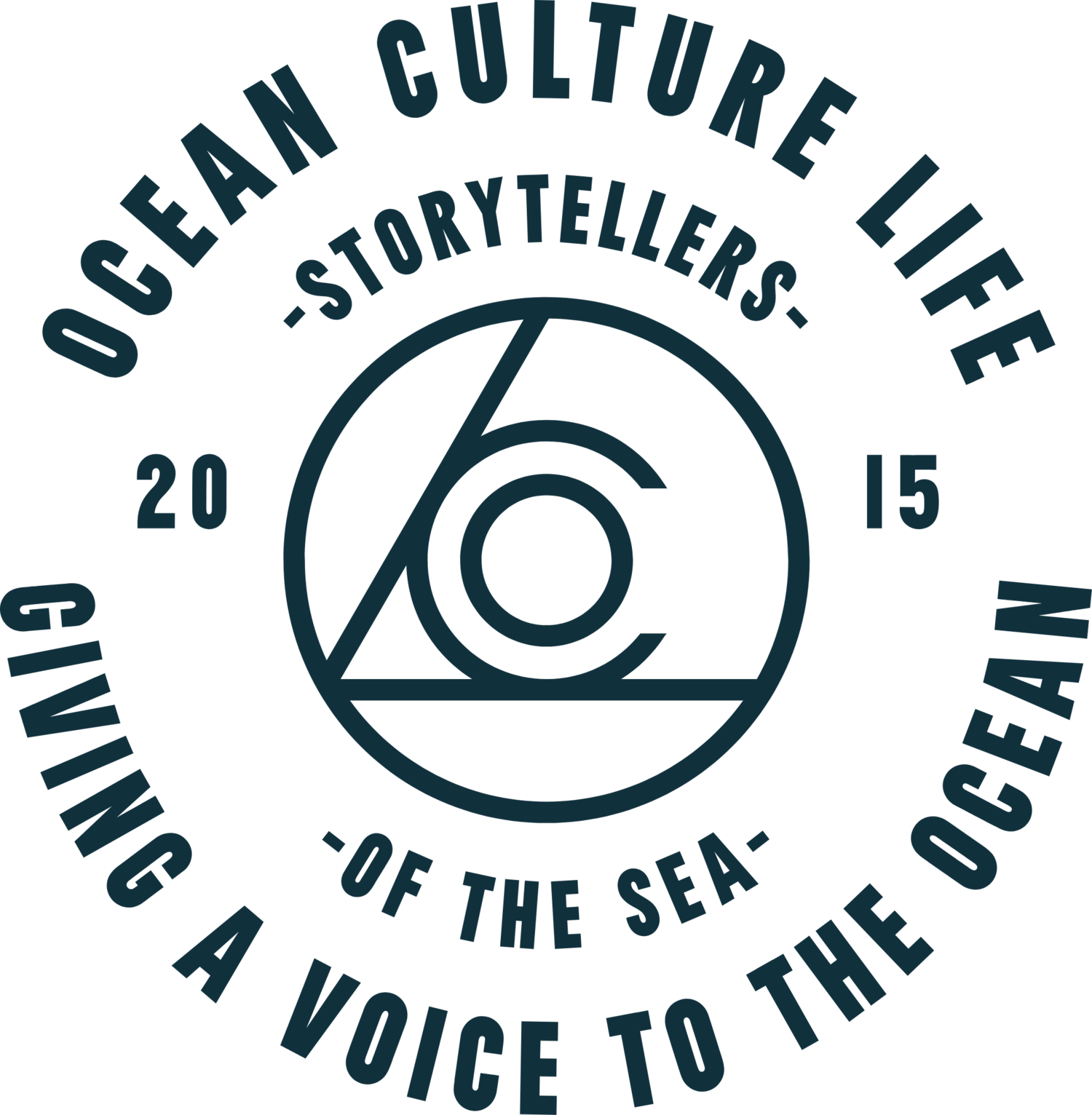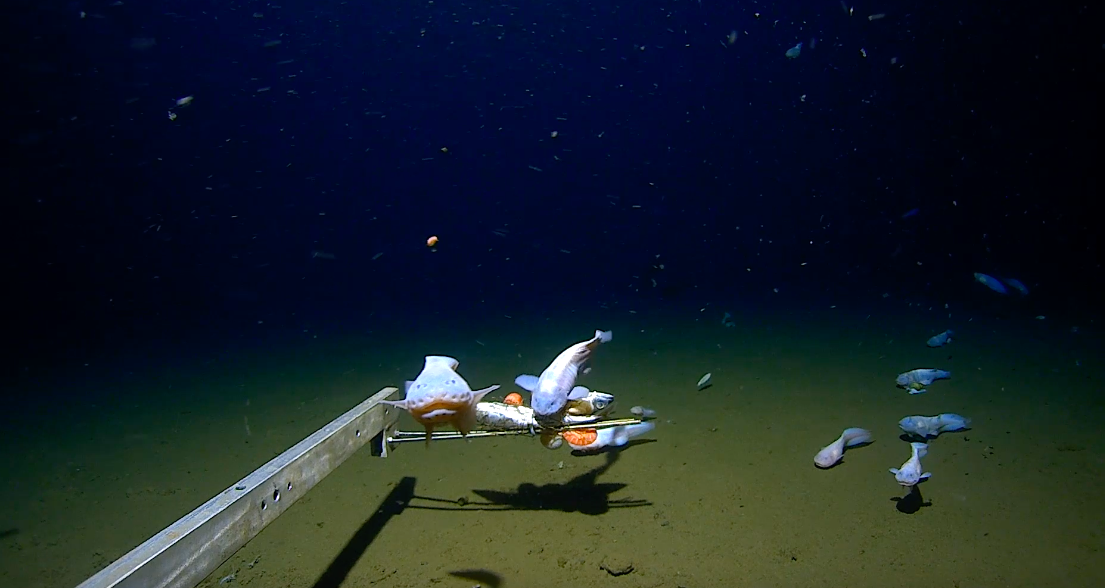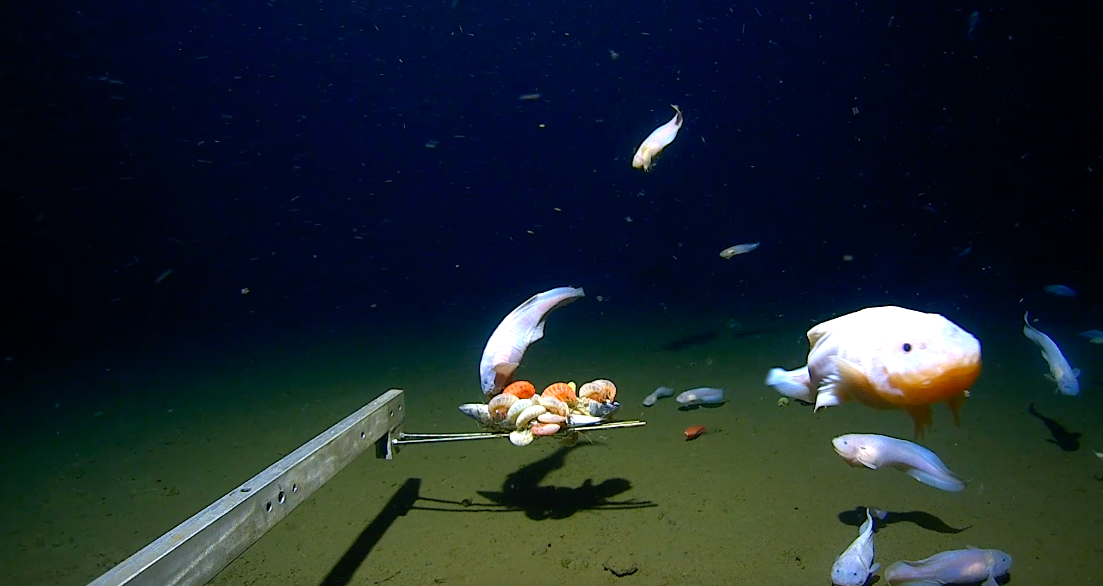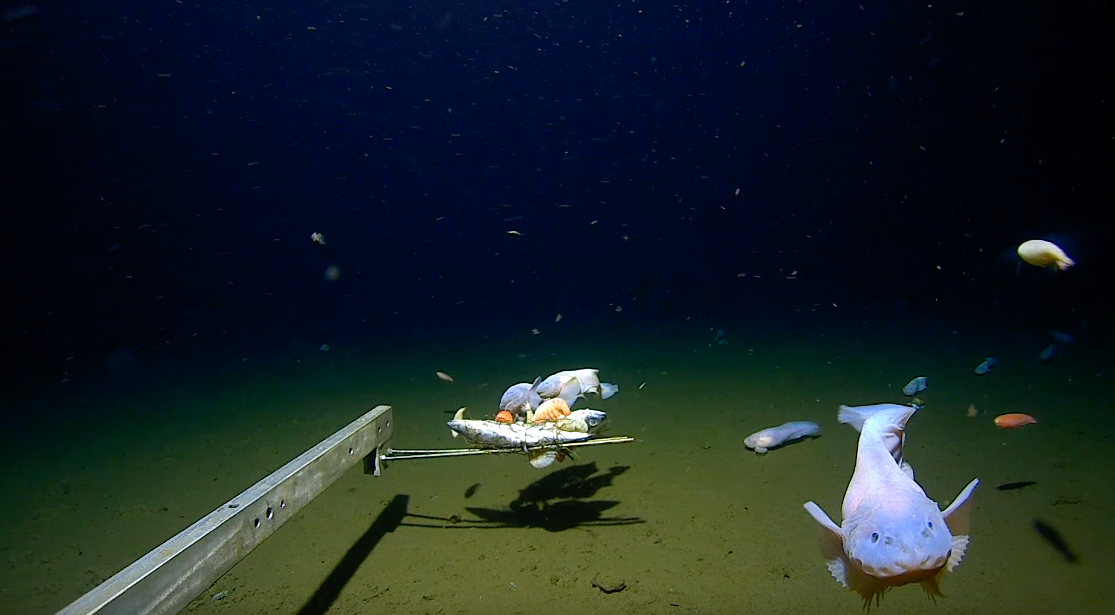The Deepest Fish Ever Recorded
Meet the Pseudoliparis snailfish - the deepest recorded fish
The ocean is a vast and mysterious world, with depths that are still largely unexplored. Recently, a team of scientists made an incredible discovery in the Mariana Trench, the deepest part of the ocean. They recorded footage of the deepest fish ever seen, the Pseudoliparis snailfish, swimming at a staggering depth of 8,336 metres.
This remarkable creature has adapted to survive in one of the harshest environments on Earth, where the pressure is 800 times greater than at the surface. The discovery of this fish sheds light on the incredible diversity of life that exists in the deep ocean and highlights the importance of continued exploration and preservation of our planet's fragile ecosystems.
The Discovery of the Deepest Fish In the Ocean
The Mariana Trench, located in the Pacific Ocean, is the deepest part of the ocean, with a depth of over 10,900 metres. It is an extremely challenging environment for humans to explore, due to the crushing pressure and extreme darkness. However, with the help of cutting-edge technology, scientists have been able to capture images and videos of the deepest parts of the trench, revealing a rich diversity of marine life.
The fish was named after its resemblance to a snail, with a small head and a long, thin body. Its discovery was a surprise to scientists, who had previously believed that the extreme conditions of the trench would make it impossible for fish to survive. However, the Pseudoliparis snailfish has proven to be an incredibly resilient and adaptable species, able to thrive in the deepest and darkest parts of the ocean.
The discovery of the Pseudoliparis snailfish is not only significant in terms of marine biology, but also has implications for our understanding of the Earth's geology. The Mariana Trench is located in a subduction zone, where one tectonic plate is forced under another. The extreme pressure and heat in this region can cause the release of gases and minerals from the Earth's mantle, which can support unique ecosystems like those found around the Pseudoliparis snailfish.
Images by The University of Western Australia
Physical Characteristics of the Pseudoliparis Snailfish
The Pseudoliparis snailfish is a unique and fascinating creature, with a number of physical characteristics that help it to survive in the extreme conditions of the Mariana Trench. At a length of around 15 centimetres, it is a small fish, with a long, slender body and large, round eyes. Its skin is translucent and gelatinous, allowing it to blend in with its surroundings and avoid detection by predators.
One of the most notable characteristics of the Pseudoliparis snailfish is its lack of scales. This is an adaptation to the high-pressure environment of the Mariana Trench, as scales would be crushed under the intense weight of the water. Instead, the fish has soft, fleshy skin that is covered in tiny bumps called denticles. These denticles provide some protection against predators and help the fish to maintain its shape under pressure.
The Pseudoliparis snailfish also has a unique digestive system, which allows it to extract nutrients from the scarce food sources in the deep ocean. Its stomach is able to expand to a large size, allowing it to consume prey that is much larger than itself. The fish also has a long, coiled intestine, which helps to increase the surface area available for nutrient absorption.
Image Credit: The University of Western Australia
Adaptations of the Pseudoliparis Snailfish to Extreme Ocean Depths
One of the most important adaptations of the Pseudoliparis snailfish is its ability to regulate its buoyancy. Unlike most fish, which have a swim bladder filled with gas to control their buoyancy, the Pseudoliparis snailfish has a gelatinous substance in its body that is similar in density to seawater. This allows the fish to remain neutrally buoyant at the extreme depths of the Mariana Trench, without expending energy on swimming.
The Pseudoliparis snailfish is also able to tolerate the low oxygen levels of the deep ocean. It has a large gill surface area and a high oxygen-binding capacity in its blood, allowing it to extract oxygen efficiently from the water.
Another adaptation of the Pseudoliparis snailfish is its slow metabolism. The fish has a low metabolic rate, which allows it to survive in the nutrient-poor environment of the deep ocean. It also has a long lifespan, with some individuals living for over 100 years.
The Significance of the Discovery
The discovery of the Pseudoliparis snailfish is an important milestone in our understanding of the deep ocean. It highlights the incredible diversity of life that exists in this harsh and unforgiving environment, and raises new questions about the evolution and adaptation of marine species.
The discovery of the Pseudoliparis snailfish also has implications for the conservation of deep-sea ecosystems. The deep ocean is one of the most unexplored and poorly understood regions of the planet, and is under threat from human activities such as deep-sea mining and oil exploration. The discovery of new and unique species like the Pseudoliparis snailfish underscores the importance of protecting these fragile and complex ecosystems.
Other Notable Deep-Sea Creatures
The Pseudoliparis snailfish is just one of many fascinating and unique creatures that inhabit the deep ocean. Other notable species include the giant squid, the vampire squid, and the lanternfish.
The giant squid is one of the largest invertebrates in the world, with some individuals reaching lengths of over 12 metres. It is a deep-sea predator, with a powerful beak and tentacles lined with hundreds of suction cups.
The vampire squid, on the other hand, is a small and harmless species that feed on marine snow and other small particles. It has a unique appearance, with red eyes and a cloak-like webbing that surrounds its body.
The lanternfish is a small and abundant species that plays a key role in the deep-sea food chain. It has bioluminescent organs that allow it to produce light, which it uses for communication and to attract prey.
The Challenges of Studying Deep-Sea Creatures
Studying deep-sea creatures is a challenging and expensive task, due to the extreme conditions of the deep ocean. Researchers must use specialised equipment, such as remotely operated vehicles (ROVs) and deep-sea submersibles, to explore and document the deep ocean.
In addition to the logistical challenges, there are also ethical considerations when studying deep-sea creatures. Many of these species are poorly understood and may have unique and fragile ecosystems that could be disrupted by human activities. Researchers must take care to minimise their impact on these ecosystems and conduct their research in a responsible and sustainable manner.
Conservation Efforts for Deep-Sea Creatures Like the Pseudoliparis Snailfish
Conservation efforts for deep-sea creatures like the Pseudoliparis snailfish are essential to protect these fragile and complex ecosystems. One of the most important steps is to establish marine protected areas (MPAs) in the deep ocean. MPAs can help to preserve biodiversity and protect vulnerable species from human activities such as deep-sea mining and oil exploration.
Another important conservation strategy is to reduce our reliance on single-use plastics and other pollutants that can harm marine life. By reducing our impact on the environment, we can help to protect the deep ocean and its inhabitants for generations to come.
The discovery of the Pseudoliparis snailfish opens up new avenues for research into the deep ocean. Scientists are now able to study the adaptations and evolution of this unique species, and to gain a better understanding of the complex ecosystems that exist in the Mariana Trench and other deep-sea environments.
Future research may also help to uncover new species and adaptations in the deep ocean, and to shed light on the geological processes that shape our planet. With continued exploration and research, we can unlock the mysteries of the largest and least explored habitat on Earth.




